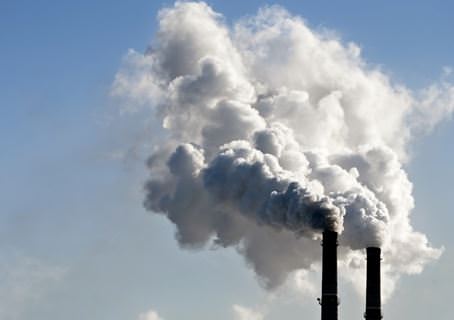Study emphasizes importance of reducing nitrogen pollution from fertilizer
Environmental experts monitor agricultural activity in the U.S. to make sure that farmers' industrial practices are minimally harmful. The industry requires companies to use pesticides, fertilizers and other chemical compounds, all of which may have negative effects on the health of consumers or the environment if they are used improperly or contaminate local resources.
One of the major sources of agricultural pollution is nitrogen-based fertilizers. Although nitrogen is essential to maximizing crop yields, industry-wide improper use of fertilizer can have dramatic repercussions around the world. However, one team of scientists from the Potsdam Institute for Climate Impact Research suggested that nitrogen pollution can be cut in half through various mitigation measures, thereby curbing unnecessary expenses for the economy and protecting people's health, as published in the journal Nature Communications.
Why is nitrogen so dangerous?
According to the Piscataqua Region Estuaries Partnership, which is a project supported by the University of New Hampshire and U.S. Environmental Protection Agency, nitrogen is a nutrient that can lead to abnormally robust algae growth if it ends up in bodies of water. The algae can block out the sunlight that other plant life need to grow, and when the algae die, the decomposition depletes the water of oxygen. This condition, known as hypoxia, causes other plant and animal life in the water to die.
Furthermore, the EPA noted that algal blooms make water non-potable for humans. People who drink this water may develop rashes, respiratory problems, stomach or liver illness, or problems with the nervous system. Additionally, disinfectants in treated water may react with algae to produce dioxins. These byproducts have been linked to cancer and other health problems.
Food production can become more efficient, cleaner
Improper or inefficient applications of nitrogen-based fertilizer in agriculture can cause the nutrients to contaminate runoff and end up in water sources. According to the authors of the Nature Communications study, every other ton of nitrogen applied in agriculture ends up in runoff, gets blown elsewhere by the wind or gets decomposed by microorganisms. In Europe, between 1 percent and 4 percent of economic output is covered by the damages of nitrogen-based pollution, accounting for billions of Euros. Ultimately, if no actions are taken, the amount of nitrogen pollution in the environment will grow by 20 percent by 2050, as estimated by the Potsdam researchers.
To get a better grasp on the problem, they ran various computer scenarios in their lab, and concluded that the combination of various mitigation measures could actually cut nitrogen pollution in half.
"For consumers in developed countries, halving food waste, meat consumption and related feed use would not only benefit their health and their wallet," study co-author Alexander Popp said in a statement. "Both changes would also increase the overall resource efficiency of food production and reduce pollution."
The researchers also suggested that fertilizer application be more targeted for plants through use of soil measurements. Additionally, animal waste can be processed into another source of nitrogen-rich fertilizer.
According to experts at the EPA, one way farmers can control nitrogen pollution is by using controlled-release fertilizers. These only have to be applied once a year, and release nitrogen into the soil gradually enough that they are less likely than standard fertilizers to leach into the soil or get washed away with the runoff. Timed release is usually dependent on temperature settings.
According to the Piscataqua Region Estuaries Partnership, nitrogen pollution is not just a result of agriculture. It may also come from poorly maintained septic tanks and inadequate water treatment infrastructure.
CONTACT US
Tel: +44 (0) 151 649 4000
Email: marketing@greyhoundchrom.com
FOLLOW US
YOU MAY ALSO BE INTERESTED IN OUR NEWSLETTER










